Sri Lanka: A world in one island
Sri Lanka is one of those places that everyone’s talking about at the moment. It’s an up-and-coming destination and one of those special places with something for just about everyone.
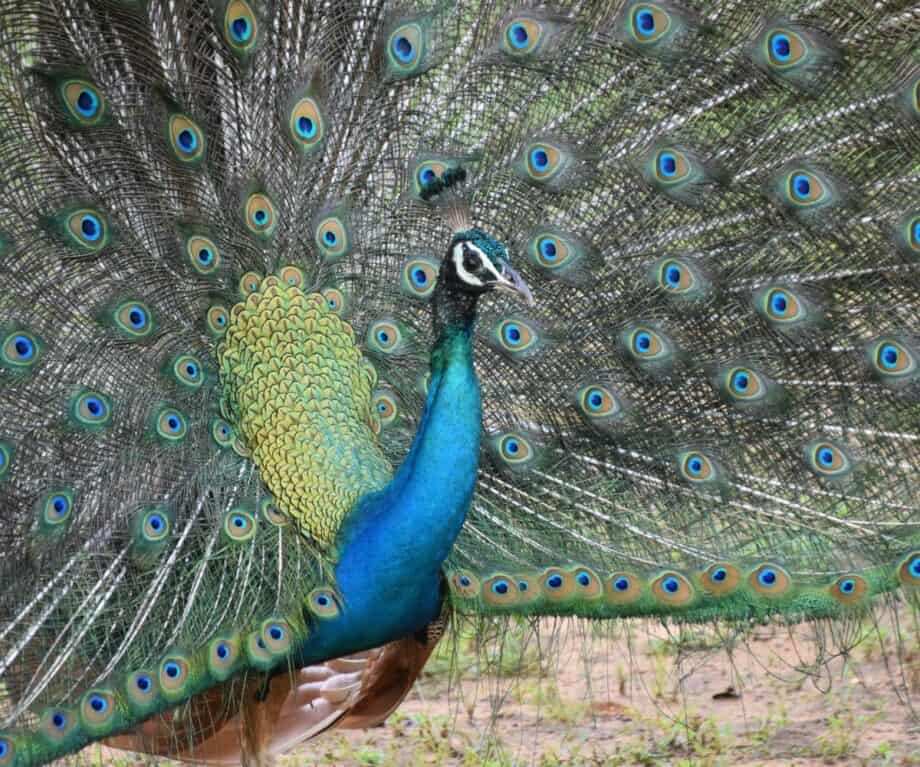
Are you looking to combine rich history, diverse culture, nature, wellness, wildlife, incredible cuisine and more, all in one trip? Then Sri Lanka is the place to be. With 8 UNESCO sites, ancient cities, lush rainforests, palm-fringed beaches, national parks, fabulous tea estates and generous, warm, welcoming people; this compact, teardrop-shaped island doesn’t disappoint. No matter what you’re looking for, Sri Lanka has something for you.

Colombo
The commercial capital and the country’s most populated city, Colombo is a port city, with a rich colonial heritage.
The city is a heady mix of architectural and cultural influences, with historic temples, bustling bazaars, colonial relics and sprawling parks. Take a tuktuk ride to visit the labyrinthine of Pettah market. Alternatively, do as the locals do, and head to Galle Face Green for sunset, or have high tea at one of the colonial style hotels overlooking the Indian Ocean.
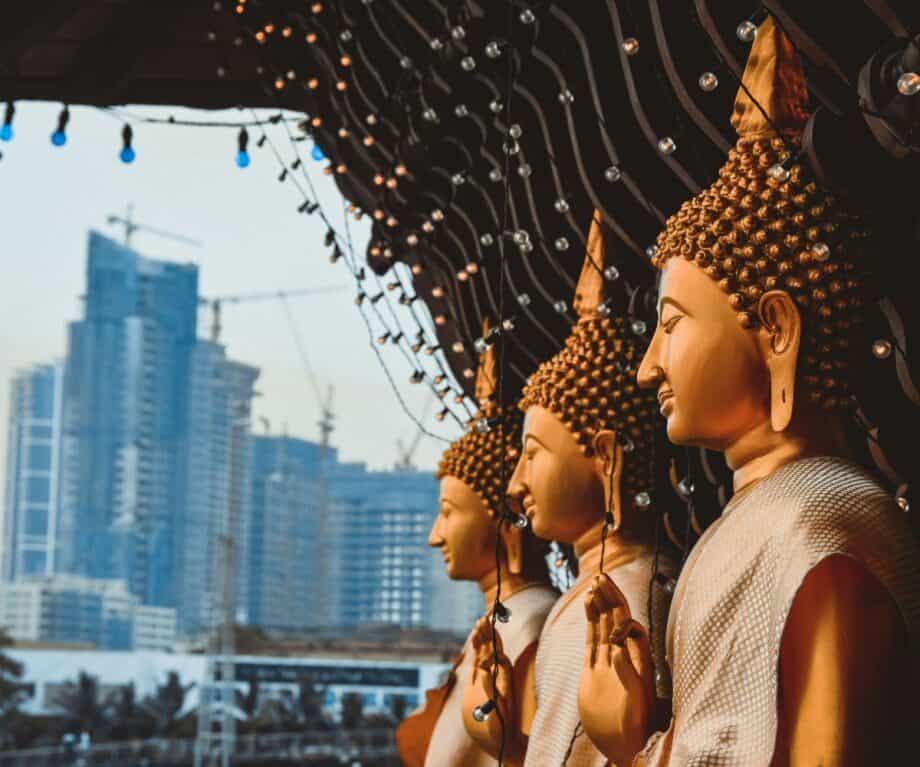
Some of the most beautiful and important temples in Sri Lanka are hidden amongst the bustling, chaotic streets of Colombo. The striking Sri Kaliawasanathar Swami Devasthanam Temple is one of the oldest and most ornate Hindu temples in the city. You’ll be wowed by its tiered towers adorned with colorful miniature statues of Hindu. Located in the bustling inner-city near the picturesque Beira Lake, the striking Gangaramaya Temple is one of the oldest Buddhist temples in Colombo. Koneswaram Temple perched atop a rocky promontory surrounded by the sea, is a technicolor treat with intricate carvings, sculptures and colorful shrines.

Where to stay: Uga Residence was once a grand Victorian townhouse, built in the 19th century. Its great halls and expansive gardens once entertained British governors, Indian maharajas, European nobility and the cream of the colonial Ceylon society. Today it’s a centrally located boutique hotel with 11 luxury suites.
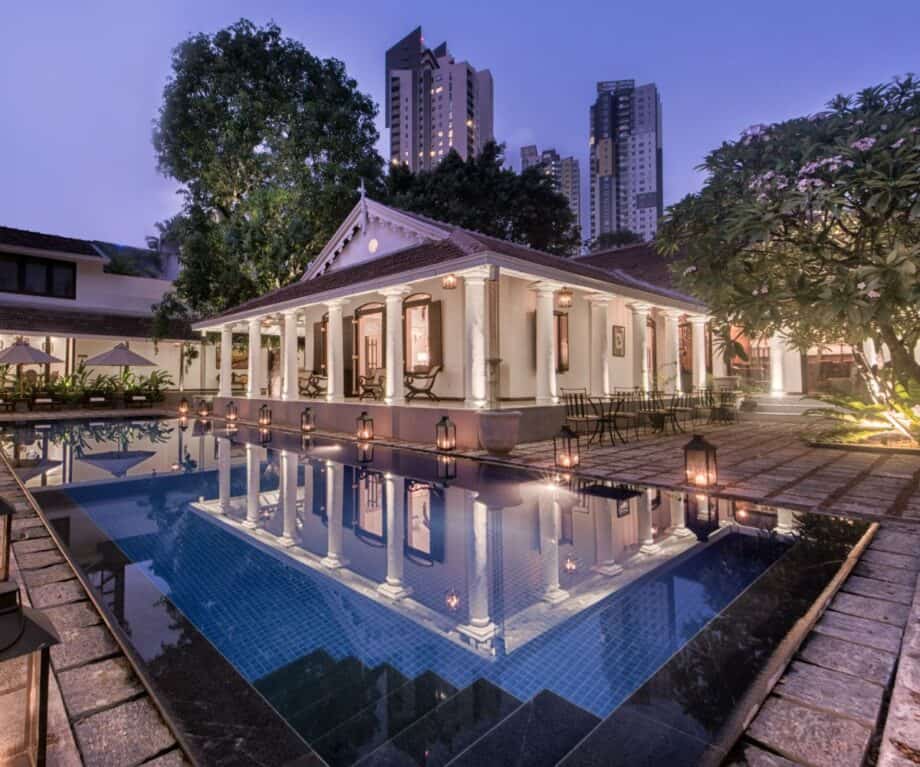
Anuradhapura
A four-hour drive from Colombo is Anuradhapura, Sri Lanka’s original royal capital and a UNESCO World Heritage site. Ancient cities don’t get much bigger than Anuradhapura, and few capitals around the world have ever lasted as long. Dating back to the fourth century BC, Anuradhapura was the spiritual and secular capital of the island for well over a millennium. At its height, the city was dotted with monasteries and was home to over 10,000 monks. Covering an area of over sixteen square miles, many of these monasteries and colossal dagobas (stupas) can still be seen today and still attract Buddhist pilgrims in the thousands.
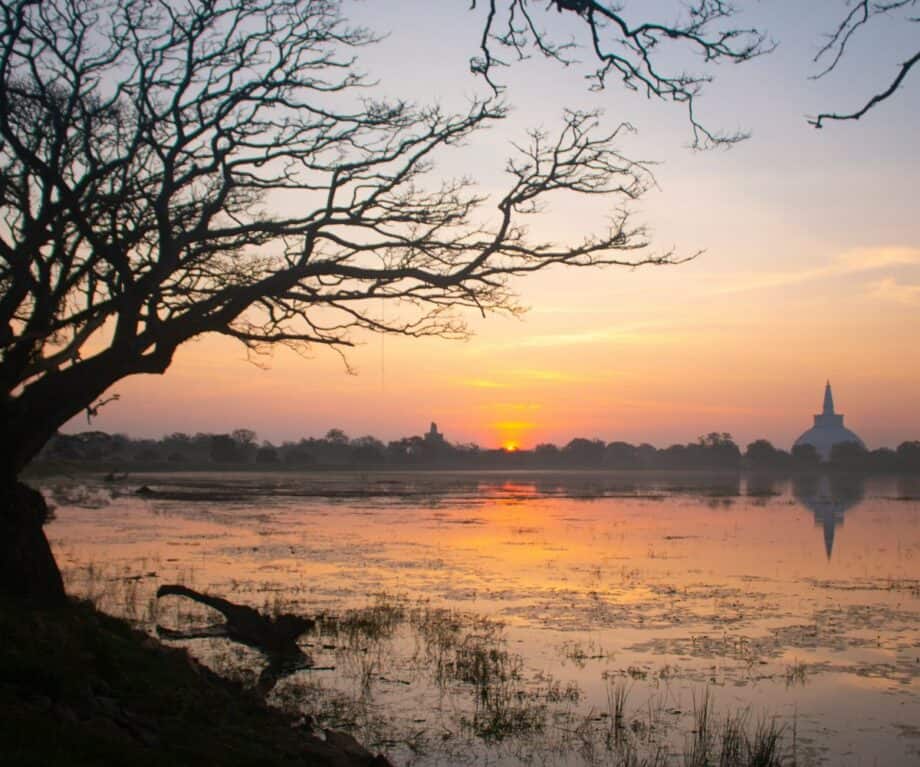
Among the giant stupas are Jetavanarama, built in the 3rd century AD and still the largest brick-built monument in the world, Thuparamaya Stupa, the first dagoba to be built in the country, and Ruwanwelisaya, one of the tallest monuments in the world.
We opted for a private guided cycling tour that took us through a dozen of the sites including the three colossal stupas and the Sri Maha Bodhi, a sacred fig said to be a branch from the tree under which Buddha was enlightened.
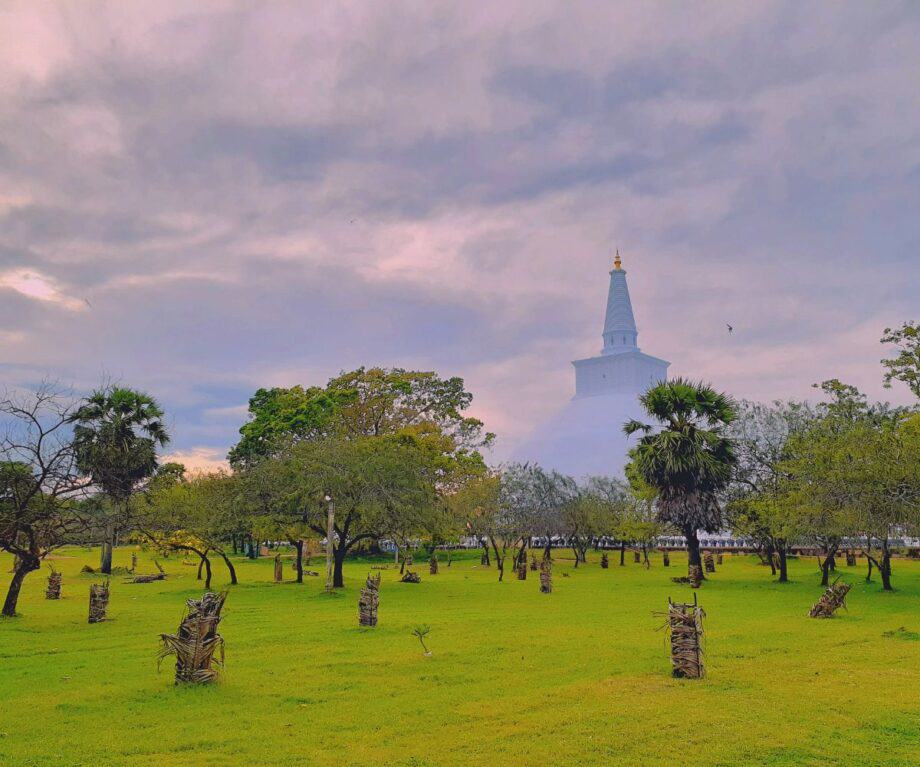
Where to stay: Uga Ulagalla is a 150-year-old mansion, set in 58 acres of lush gardens and rice fields. Only a 30-minute drive to Anuradhapura and an hour away from the great rock fortress of Sigiriya it’s well located for exploring the area’s archaeological treasures.

Sigiriya (Lion Rock Fortress)
The most iconic of Sri Lanka’s seven UNESCO World Heritage Sites, Sigiriya was built during the reign of King Kassapa I (AD 477 – 495) and doesn’t fail to impress. Surrounded by a lush expanse of jungle, the sheer rock rises almost vertically 650ft upwards. On the top lies the remains of a royal palace and citadel, and at its foot lies the remains of an extensive network of ancient pleasure gardens. Known for its ancient paintings (frescos), in its time Sigiriya has been both a royal palace and a Buddhist monastery.
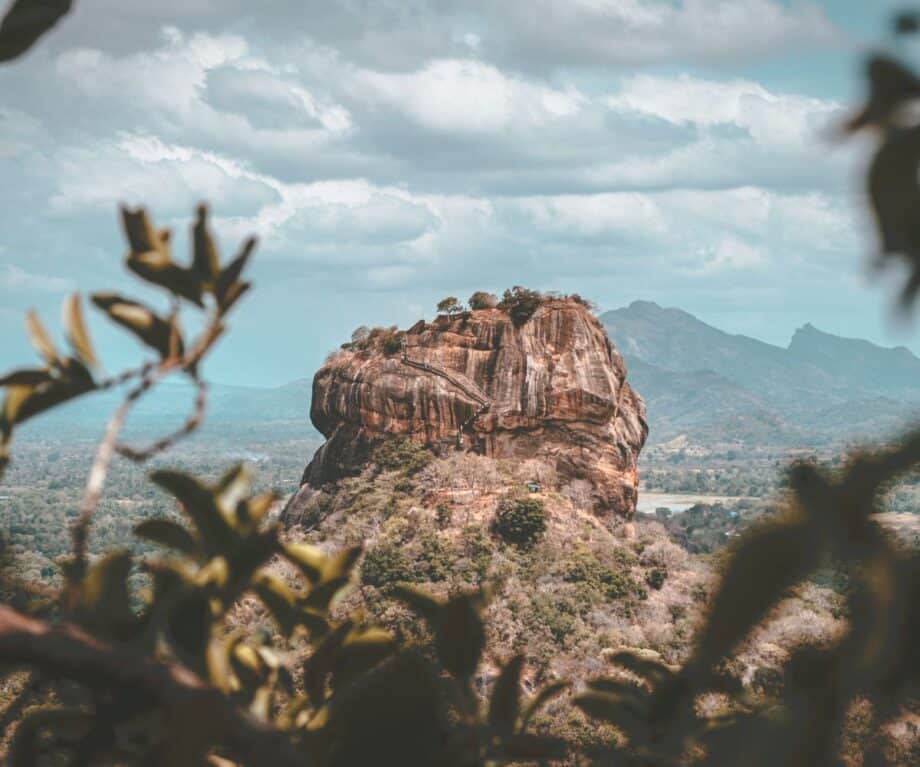
Pro tip: Go early, so avoid the heat of the day and the crowds and make sure you’re prepared for the 1,200 step climb.

Dambulla Cave Temples
This UNESCO site is one of the most beautiful and well-preserved cave temples in all of Asia. Still home to Sri Lankan Buddhist monks, the spectacular Dambulla cave temples, hewn into a granite outcrop, tower 520ft over the surrounding plains, date from the third and second centuries BC.
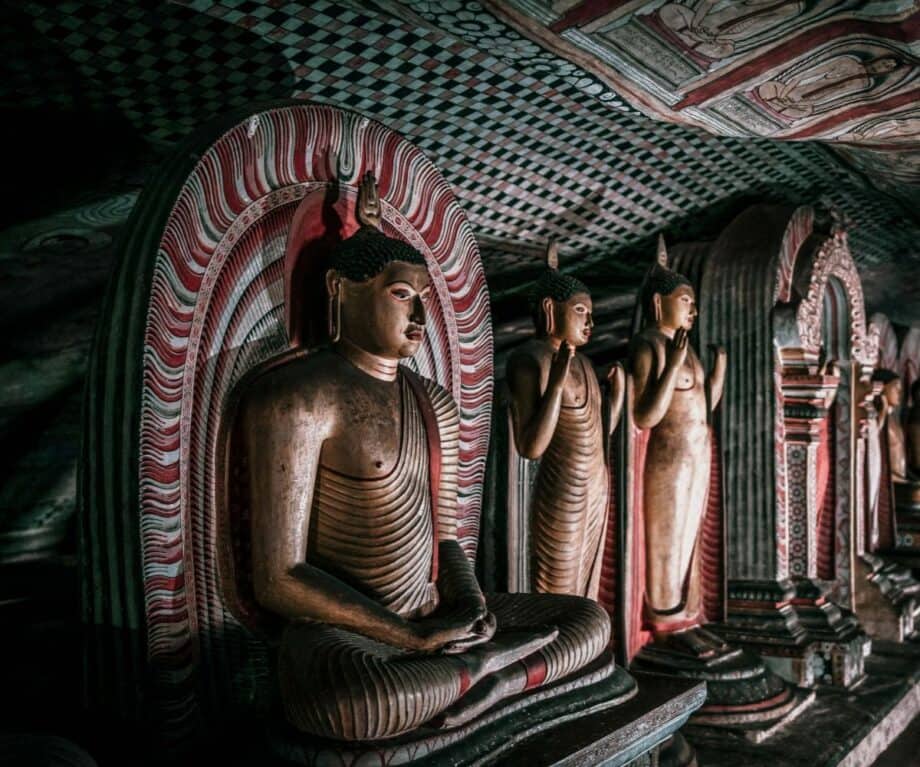
Spread over five caves, under a vast overhanging rock and with intricately painted ceilings, there are a total of 153 Buddha statues, three statues of Sri Lankan kings and four statues of gods and goddesses.

Kandy
Kandy was the last capital of the ancient kings of Sri Lanka. It’s a pretty place, tucked beside a lake in the country’s central highlands. This is Sri Lanka’s second largest city and home to Sri Dalada Maligawa, The Temple of the Tooth Relic, a teeming temple complex which houses the relic of the tooth of Buddha. Since ancient times, the relic has played an important role in local politics because it is believed that whoever holds the relic holds the governance of the country – Wars have been fought over this relic! Monks conduct daily worship in the temple’s inner chamber and rituals are performed three times daily – at dawn, at noon and in the evenings. The Temple of the Tooth Relic is very much an integral part of life in Sri Lanka and you can join the devout with your own petal offerings and light votive candles should you want to.
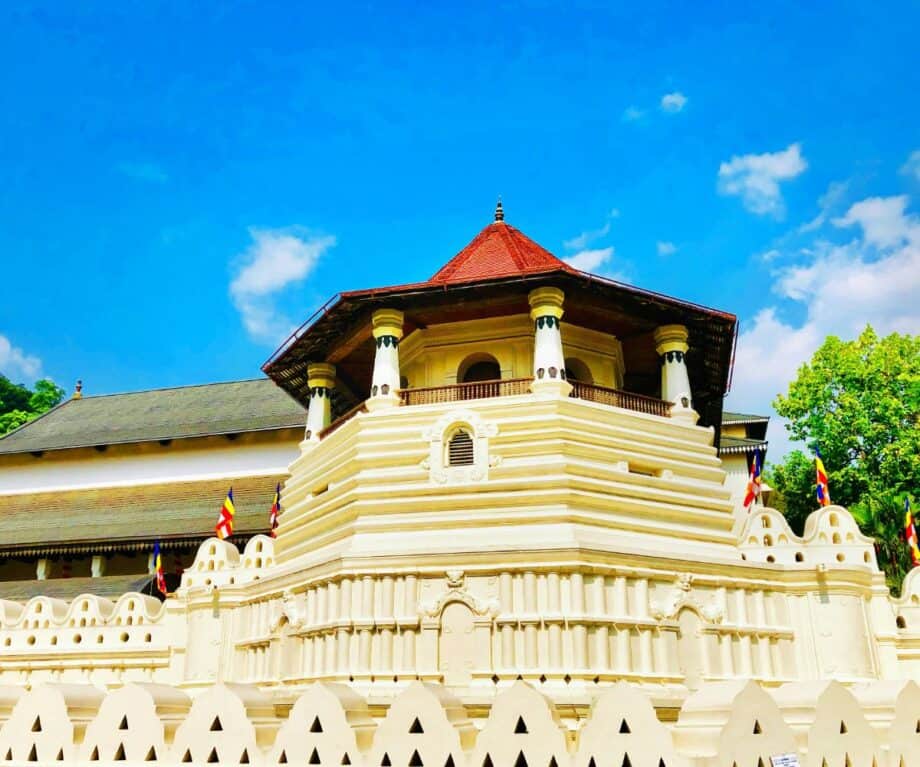
After visiting the temple, browse Kandy’s bustling marketplaces, with bright, fresh produce, local delicacies and fragrant spices, or spend the day exploring opulent temples and learning about the city’s history.
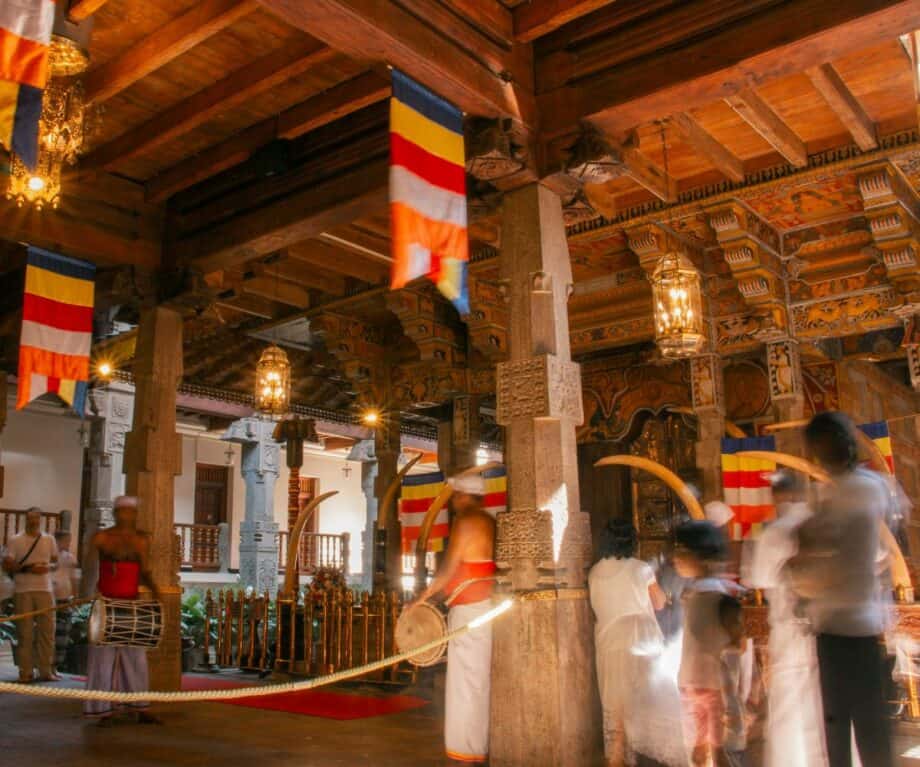
Where to stay: King’s Pavilion, located in the peaceful hills on the outskirts of Kandy, is a renovated bungalow with traditional rustic charm and elegant touches of luxury.
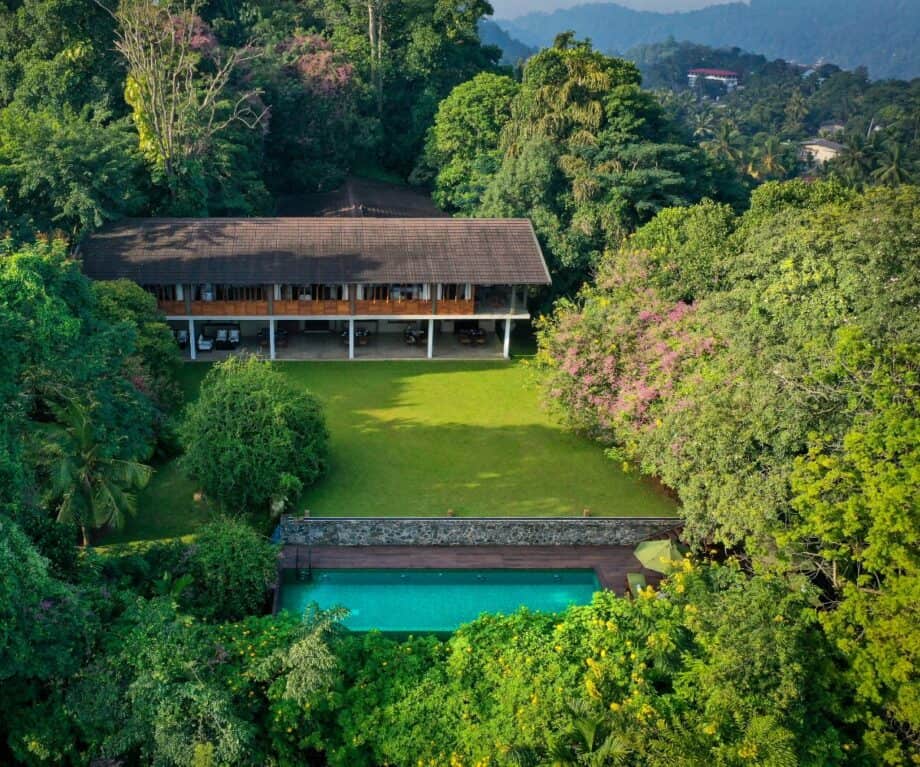
The train
There’s a good chance you’ve seen photos of travelers leaning out of a bright blue train and looking at the vibrant green tea plantations of Sri Lanka. That’s the famous train ride from Kandy to Ella and it’s a must-do on every Sri Lankan itinerary.
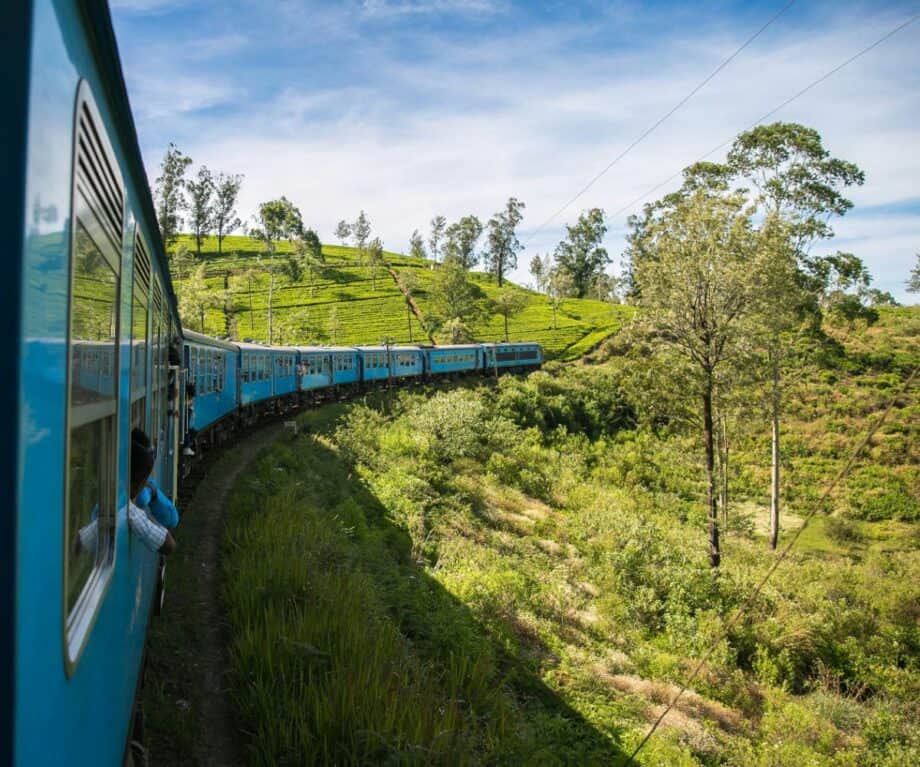
Instantly recognizable, the Hill Country rail route is arguably the most beautiful in Sri Lanka. We took a 3-hour train journey from Kandy as far as Hatton, passing through gorgeous tea country. The route is described as one of the prettiest train journeys in the world, and with good reason!
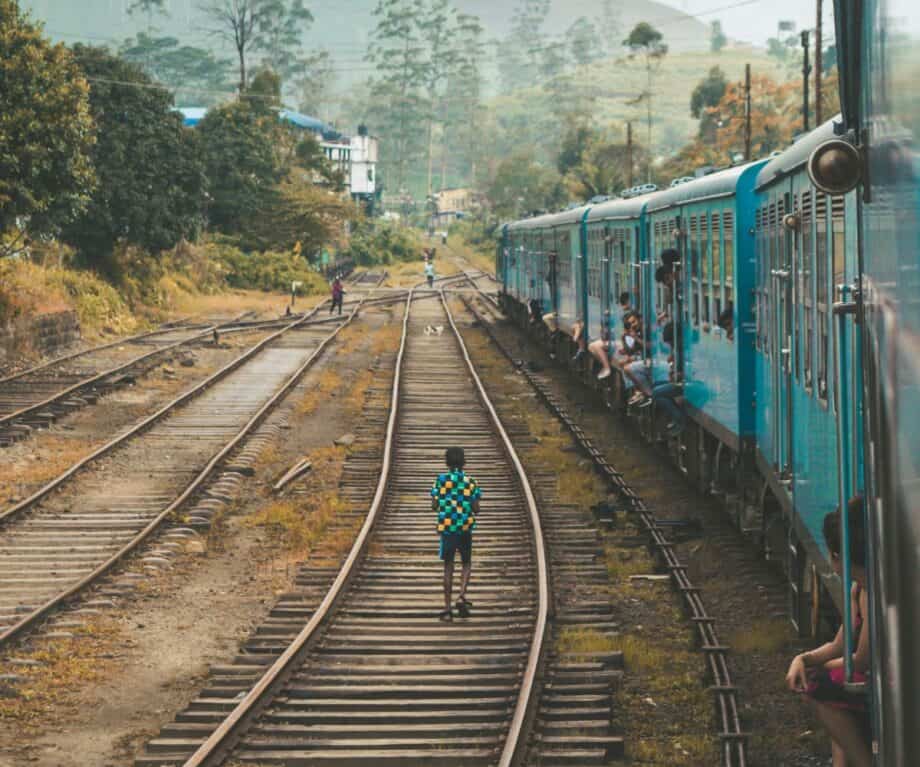
The tea estates
Since the first tea bush was planted here in 1867, Sri Lanka has become the world’s fourth-largest tea producer in the world – 17% of the world’s tea crop is grown here. Sri Lanka’s tea country is a gorgeous expanse of undulating green hills and lush plantations. If you love your tea and would like to learn more about the history of tea, or you’re just looking for some peace and tranquility, a visit to a tea plantation is a delightful escape.
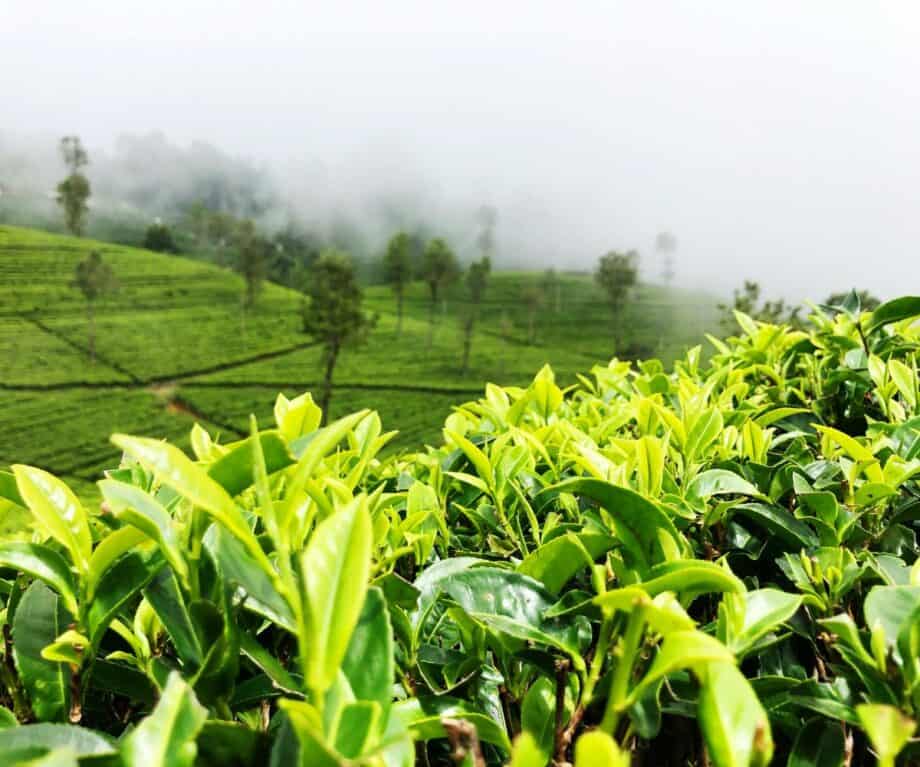
Dating back to colonial times, the bungalows on the Dilmah tea company’s estate have astounding views and exemplary, personalized service. Take long, leisurely walks through the tea plantations, take a tea factory tour to learn all about the ancient process of making tea, enjoy high tea with views of Castlereagh Lake or perhaps a game croquet.

Where to stay: Ceylon Tea Trails have restored and renovated five historic tea-planter bungalows on the estates of the famous Dilmah Tea. Guests here wish for nothing and the service is impeccable.
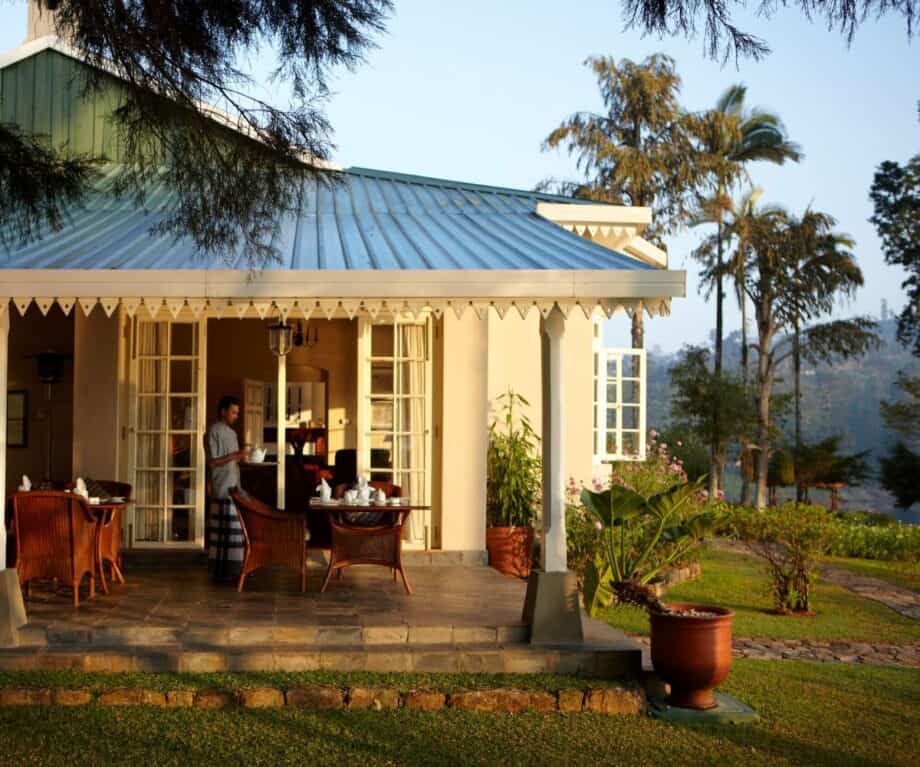
Galle
At the southernmost tip of the country and surrounded on three sides by ocean, the walled and cobblestoned city of Galle is a must on any visit to Sri Lanka. Built by the Dutch in 1663, the imposing Galle Fort is the largest and best-preserved sea fort in all of South Asia. A UNESCO World Heritage Site, inside the fort you’ll find Dutch Colonial buildings, ancient mosques and churches, museums and lots of quirky boutique cafés and restaurants.
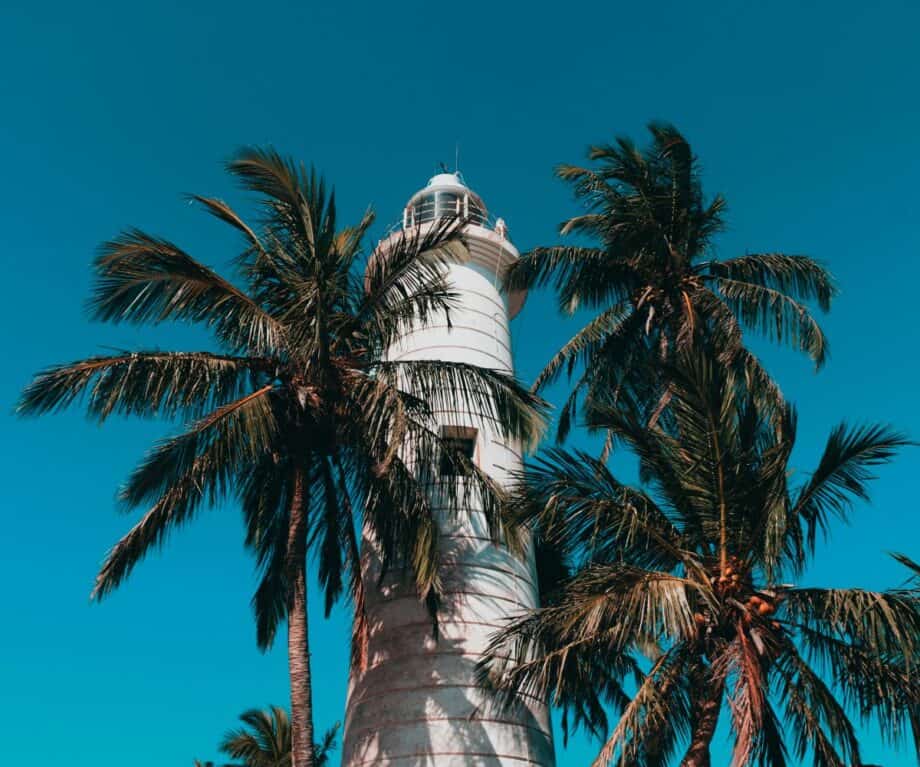
Spice traders and merchants have been replaced by a cosmopolitan crowd of artists, writers and designers, and Galle’s small streets are packed with boutique shops, buzzing bars and cafes.

Where to stay: Fort Bazaar is Galle Fort’s hippest retreat. Its 18 rooms are all arranged around a central courtyard and the restored 18th-century merchant’s house is a cool retreat from the hot streets of historic Galle.

Balapitiya
There are lots of amazing things to do and see in Sri Lanka, but some days you just might just want to relax. Not far from Galle, Balapitiya on Sri Lanka’s west coast is a lovely place to stop, relax and unwind.

With its palm tree lined idyllic sandy beach, there’s a host of activities you can fill your days with, but if you prefer you can just laze by the pool, talk walks on the beach, or swim in the sea.
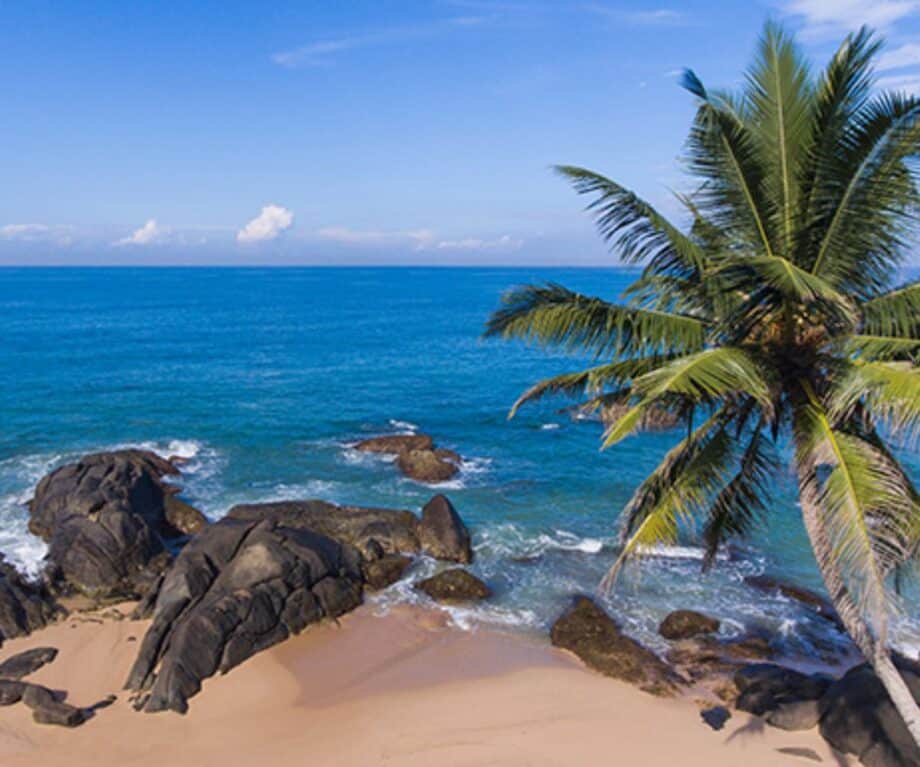
Where to stay: Kumu Beach is a modern, sleek boutique hotel only steps from golden sand beaches.
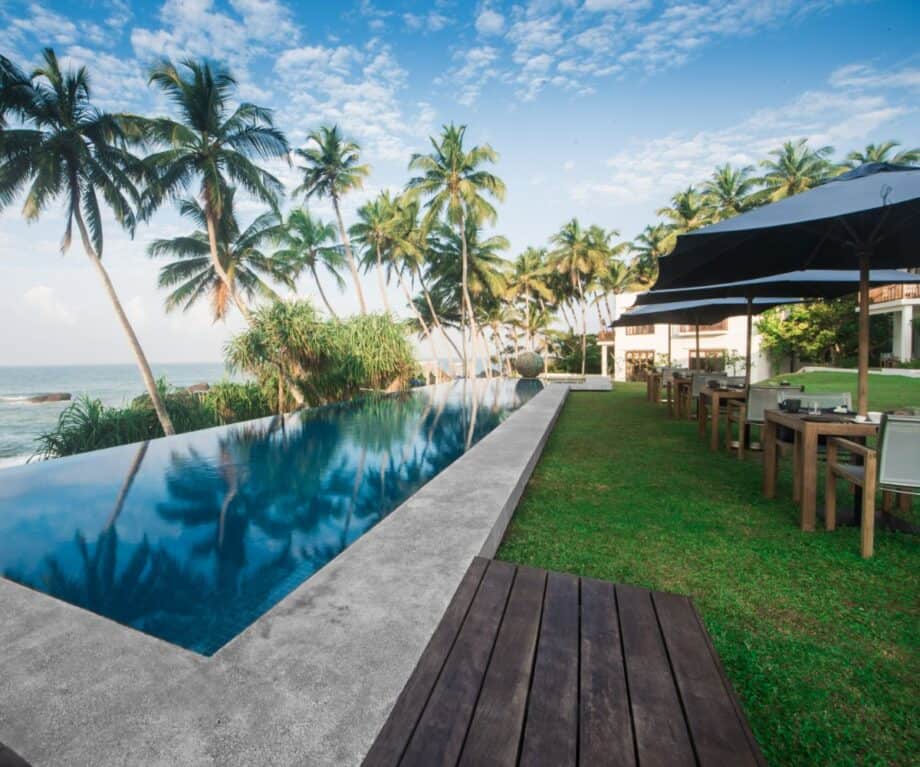
If you haven’t discovered the ‘pearl of the Indian Ocean’ yet, it’s time to put it at the top of your bucket list. So, before is gets too crowded, now is the time to plan your visit.

Seeing Sri Lanka in sustainable style
It’s lovely to travel, to visit far-flung places around the world and take in the history and culture of a place. But our yearning to tick destinations off our travel ‘bucket lists’, has resulted in more than one of these places being destroyed by tourism. The negative impact of tourism is found in way too many popular destinations these days; thanks in no small part to all that carefully curated travel content on social media.
London based Jacada Travel creates custom-designed itineraries for travellers to more than 70 countries across six continents. Crafting unique travel experiences and once-in-a-lifetime journeys, for those who appreciate luxury and are looking for that personal touch.
There’s a lot of ‘greenwashing’ in the travel industry these days. While is it’s all very well for a hotel to say it’s green, eco or sustainable, but it’s quite another for them to be able to prove it. Jacada recently launched a Positive Impact Collection, to help take the guesswork out of it. The collection is a curated selection of properties, from Africa to Latin America and Europe to the Asian Pacific – properties that have been carefully vetted and have proven their sustainability credentials.
The properties that qualified to join the collection are all dedicated to promoting positive change in the travel industry, by reducing their carbon footprint, conserving natural resources, promoting community engagement, preserving local culture, and implementing a range of innovative climate-conscious practices.
Jacada Travel’s Positive Impact Collection is a great resource for travellers and one that enables them to choose luxury properties that contribute to the well-being of a destination – a great example of how, when done right, tourism can be a force for positive change.
Jacada planned the perfect Sri Lanka itinerary for my family and they can do the same for you.
Did you enjoy this article?
Receive similar content direct to your inbox.

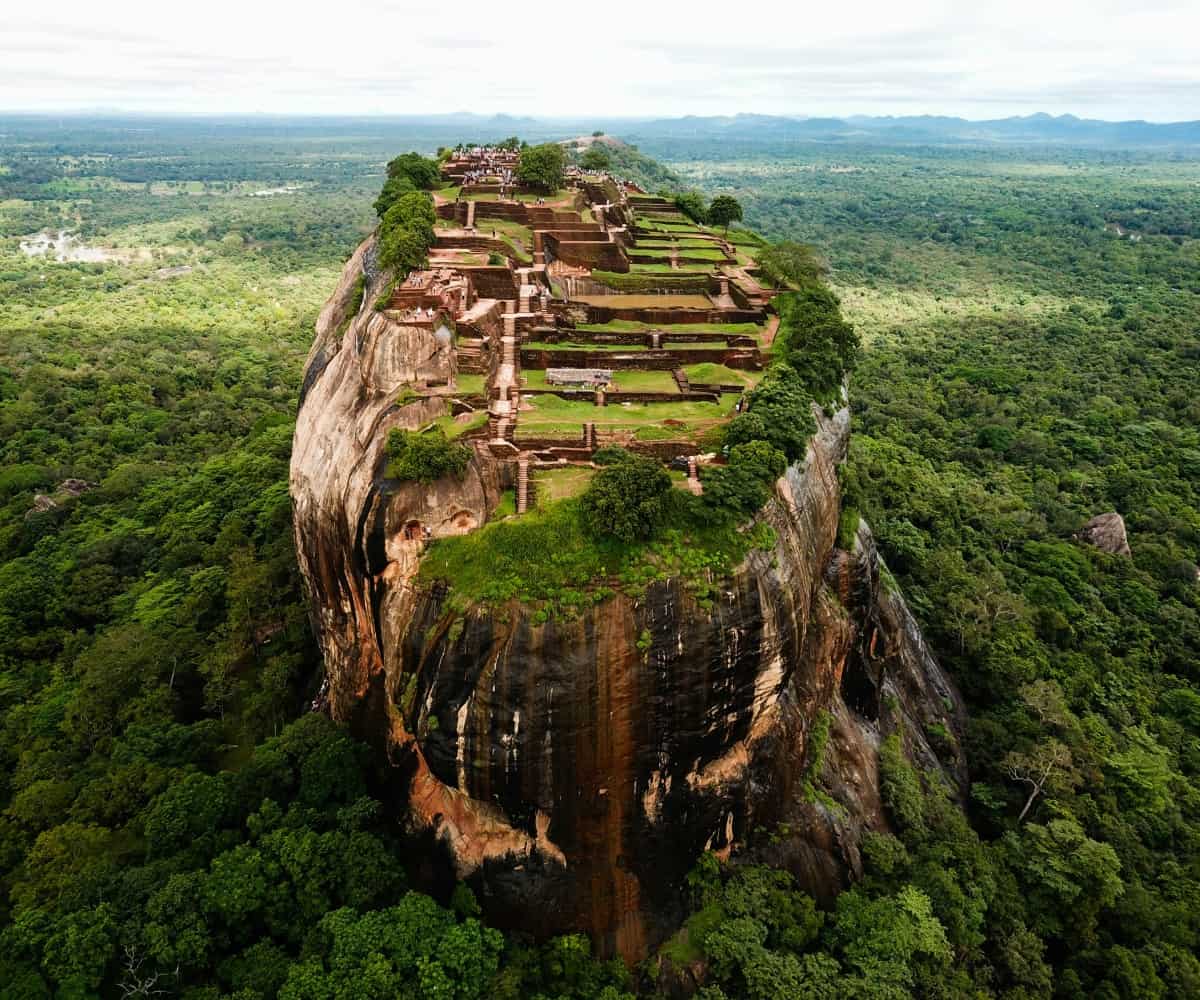

If you like walking in tea country than you could be tempted by the relatively new 300 km Pekoe Trail through Sri Lanka’s Central Highlands. It begins in Kandy and finishes at Nuwara Eliya.
Hi Fred,
I’m actually looking into the Pekoe Trail at the moment. Hoping to head back to Sri Lanka again before the end of the year. Glad to hear you recommend it.
Sarah
Do not miss out on Sri Lankan trains. They’re such a part of Sri Lankan heritage.
Hi Karen,
I agree. I actually love train travel all over the world, but I have to say Sri Lanka has some good rail journeys.
Sarah
Last week we had some travel talk over dinner and one of our guests referred to Sri Lanka as “India lite”. I expect that would upset many Sri Lankans, even though there is some truth to it.
If you haven’t been to India, Sri Lanka is a gentle intro. And of course it has loads that’s worth doing and seeing.
Hi Rose,
Interesting that you should say that. I was kind of expecting Sri Lanka to be more ‘Indian’, but having worked and travelled in India for many years, I actually found it very different.
Sarah
We stopped off at Rosyth House, about an hour south of Kandy and it was some education into tea.
For centuries it’s been 2 leaves and a bud that have been picked. Now at Rosyth they’ve bucked tradition and pick one leaf and one bud which makes for a much lighter cuppa. There’s change in the tea industry!
Hi Greg,
It’s going to be interesting to see what happens to the Sri Lankan tea industry. The younger generation don’t have the appetite to do such hard physical labour for such small wages. I think the tea estates will either have to up the wages and then the cost of tea to the consumer, or they may have to look into machine harvesting like they have begun doing in parts of China. It’s not very sustainable in it’s current format.
Sarah
I can honestly say that I had the holiday of a lifetime in Sri Lanka. I loved the food and did a couple of cookery lessons.
The elephant orphanage was brilliant as was the time relaxing on the coast at Galle.
On my only visit to Sri Lanka I didn’t go into Colombo. There were some days on Negombo beach but that probably doesn’t count. It looks as if I may have missed out.